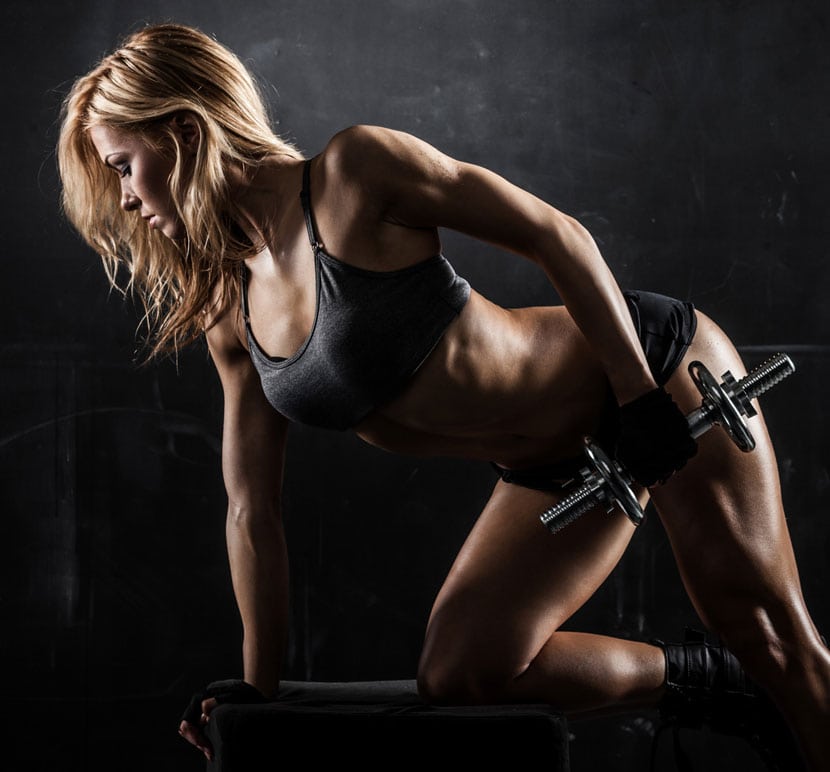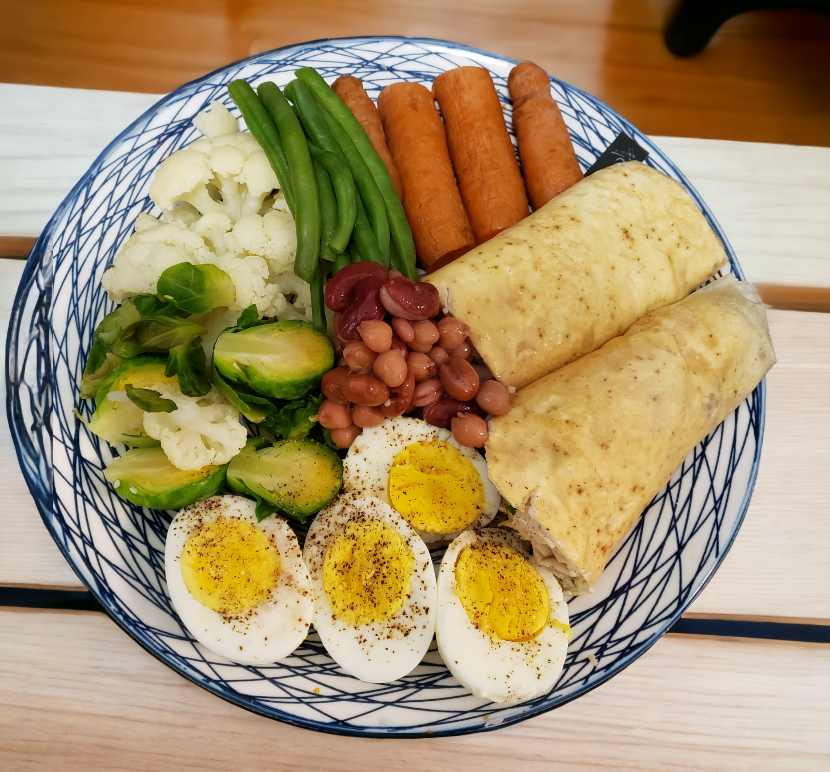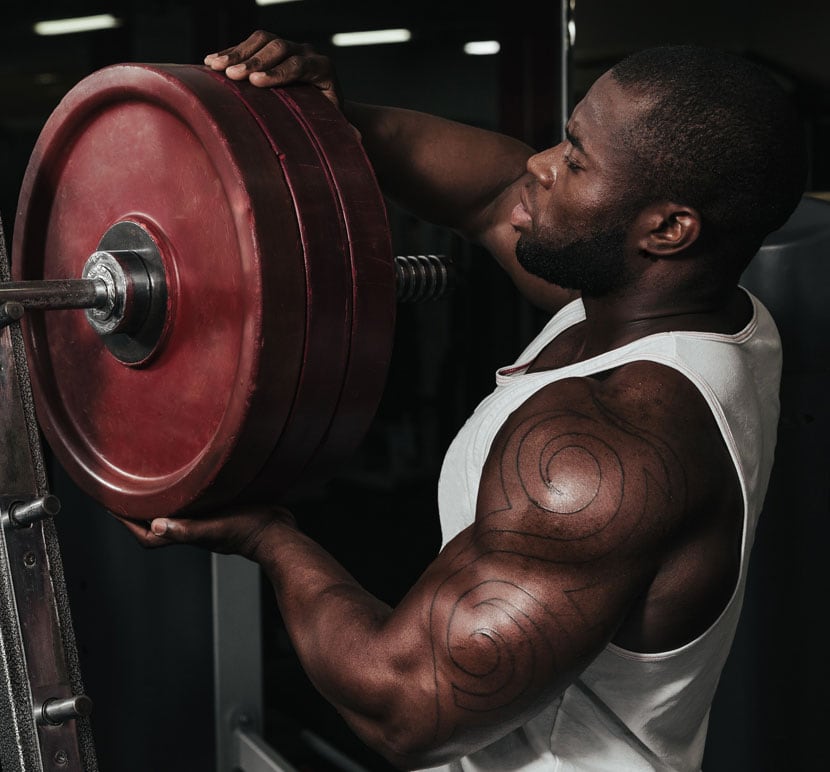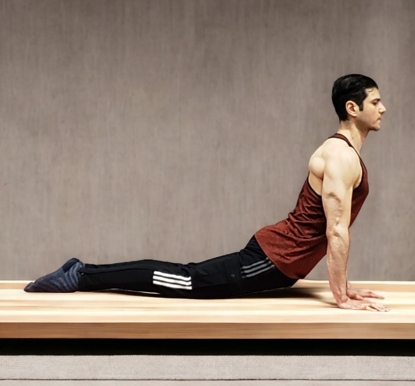At Home Calisthenics Workout Plan No Equipment

Are you looking for a way to get fit without having to deal with the hustle and bustle of the gym? Are you tired of standing in line just to be able to use the equipment, only for your workout to be constantly disrupted by other people? If so, then at-home calisthenics could be perfect for you.
Not only does it require minimal resources and without any equipment whatsoever, but it can also provide an effective full-body workout that’s designed to help develop strength, flexibility, endurance, and coordination.
In this blog post we’ll go over step-by-step exercises and workouts suitable even for beginners which don’t require anything fancy – they’re really easy. So if you want an easy way of starting your own home fitness journey – keep reading!
Key Takeaways
- Calisthenics requires minimal equipment and offers a holistic development of muscles, flexibility and strength.
- It’s accessible for anyone regardless of experience level or budget and can be done anytime, anywhere with no extra items needed.
- Setting individual goals is an important part to ensure you reach desired results by tailoring the program towards your needs while staying motivated throughout workouts.
- Beginners should start out focusing on foundational exercises to build up confidence before more complex movements such as human flag variations.
Benefits of Calisthenics for Beginners

With calisthenics, no equipment required, making it an ideal choice for those just beginning their journey into fitness or strength training.
No special equipment needed
Thankfully, the at home calisthenics workout program can be performed without special equipment. This means it is easily accessible for anyone regardless of experience level or budget. It can be done anywhere with minimal space, making it a great solution for those who do not have access to a gym or expensive equipment.
Bodyweight exercises are the main focus of the program, meaning that strength and endurance can both be developed in an effective way without any extra items. This makes the program ideal for beginners as there is less strain involved due to lack of extra weight on joints and muscles.
Moreover, within each exercise progression offered by most beginner programs there are options provided to help ensure they are achievable depending on fitness levels and individual bodies’ needs so even if you’re just starting out you don’t need to worry about being overwhelmed with tough challenges before your body is ready!
Can be done anywhere at anytime
Calisthenics exercises are the perfect way to get fit, as they can be done anytime and anywhere. With no equipment necessary, all you need is your own body weight – making it ideal if you don’t have access to a gym or workout facilities.
You can do calisthenics at home, in the park, playground, beach or even outdoors while travelling. This means that there’s never an excuse for not getting fit when you have access to simple bodyweight exercises such as push-ups, squats and burpees.
Additionally, these movements are incredibly versatile and can easily be adjusted based on personal goals or needs; meaning strength training does not take up hours of time each day but fits conveniently into an individual’s lifestyle.
Holistic development of muscles and strength
Calisthenics is a form of resistance training that uses body weight exercises, such as push-ups, pull-ups, dips, and squats to develop strength and muscle. It’s an effective way for anyone from complete beginners to advanced athletes to get into shape without training equipment or machines.
By using previously described calisthenics exercises you can target multiple muscle groups simultaneously – targeting not just your arms and back but also core muscles while improving coordination and flexibility at the same time.
Another bonus to calisthenics is that it doesn’t require fancy gym equipment; you essentially just need an area where you can perform the movements safely with minimum space needed.
Myths and Misconceptions about Calisthenics

Many people think calisthenics is only for beginners and that it’s not challenging, however with proper programming and dedication, anyone can customize their calisthenics routine to suit their individual goals.
Not just for beginners
Calisthenics is an incredibly versatile form of exercise that has something to offer for nearly everyone. While many people view calisthenics as purely a beginner level form of training, it can actually be adapted and scaled to challenge even the most advanced athletes.
For example, single leg progressions like pistol squats, split jumps and side-to-side hops are all exercises that require tremendous amounts of balance and strength which are not easily attained by beginners.
Plus, advanced calisthenics movements like human flag variations require upper body strength along with improved core stability and concentration – things that cannot be developed overnight! Overall, while many people start out trying basic pushups or planks with their at home calisthenics program, there’s no limit on how far you can take your routine if you have the dedication to do so.
Not too hard for beginners
A common misconception about calisthenics is that it’s too hard for beginners to pick up. But the truth is, it depends on the goals of each individual and how much work they are willing to put in.
Plus, with the right program, calisthenics can be tailored to different fitness levels and achievable goals. With progressive steps made over time, you can make sure your body keeps adapting while still having fun along the way! A good example could be slowly increasing reps or adding additional exercises to a workout routine as you progress.
Additionally, compared to other forms of training like weightlifting which requires expensive equipment, calisthenics is an accessible form of exercise as all you need are your own bodyweight and some space at home or outdoors without any special tools or machines required.
Still depends on individual goals
Setting individual goals is an important part of any successful calisthenics training plan. It helps to tailor the program to meet specific needs and preferences, while also giving individuals something to track and measure their progress against.
With a goal in mind, it becomes easier to stay motivated throughout your workouts and ensure that you reach desired results. Depending on what type of exercise or fitness routine you want, certain bodyweight exercises might be more suitable than others.
For example, if one’s primary focus is strength gains then low reps with big loads (e.g., weighted squats) would be appropriate whereas if fat loss is the aim then higher reps could work better (e.g., shadow boxing).
Can be enjoyable
Calisthenics can be an enjoyable form of exercise for many people due to its versatility and ability to be personalized. There are many exercises that use only bodyweight, ranging from basic movements like jumping jacks, push-ups, and squats to more complex exercises like pull-ups or human flags.
This wide range of options allows individuals to structure their bodyweight workouts in unique ways depending upon what equipment they have access too. Additionally, music or other audio media can help make the at-home workout upbeat and motivational as well which is a great way to keep your motivation up when doing these types of exercises.
Lastly, calisthenics also makes it easier for individuals to set achievable goals based upon their own capabilities so progress can be monitored closely on both a short term and long term basis with each session offering new challenges and rewards that appeal differently depending on the person’s individual preferences.
The Importance of a Good Beginner Program
A good calisthenics program for beginners should focus on building a solid foundation of form and technique, be consistent, and provide new challenges suited to the individual.
Focusing on the basics
As a beginner starting out with calisthenics, it is important to focus on the foundational exercises first. This will help you build strength and solidify a foundation of knowledge from which to start progressing your skills safely and effectively.
Taking your time with basic exercises such as push-ups, dips, burpees and pull-ups instead of rushing in can help you prevent injuries from performing more advanced movements too soon.
By mastering these basics, you’ll be prepping yourself for bigger challenges later on while at the same time strengthening different muscle groups throughout your body. The best part is that these workouts don’t require any fancy equipment or gym memberships – only needing gravity and what nature provides!
Suitable exercises for beginners
Calisthenics is a great way to start a fitness journey without equipment or expensive gym memberships. It involves using only body weight to perform exercises like push-ups, dips, pull-ups, burpees, and squats.
Depending on individual goals and abilities these exercises can be easily modified or progressed in difficulty. Push-ups are one of the best “bang for your buck” exercises as they build upper body strength, improve core stability and engage your entire body.
Squats help with lower body strength training while planks provide an effective workout for abdominals muscles. Additionally calf raises work well for developing leg muscles while adding variation to calisthenics workouts.
Progressive in nature
A good base calisthenics workout program should be progressive, meaning it should allow for gradual progress without overwhelming a beginner. It’s important to remember that calisthenics is a form of resistance training; so just like with lifting weights, the exercises need to be adapted as you become stronger and more skillful.
The concept behind this is called progressive overload – gradually increasing the stimulus your body encounters in order to keep it from making an adaptation plateau. Achieving this progression with no equipment necessary requires much thought when designing one’s workout routine; focusing not only on the physical movements and strength achieved but also on advancing new skills through progressively harder exercises (think push-ups progressing into handstand push-ups).
Progressive plans are a great way for beginners to get started with building confidence, stamina, strength and power all while reaping all of the potential health benefits of calisthenic exercise.
Adaptive to individual situations
At-home calisthenics is a great workout option for people of all fitness levels – no matter where you are starting from. Beginners can start with basic exercises and gradually progress to challenges suitable to their own needs, while advanced individuals have the opportunity to modify the exercise accordingly.
The ability to adapt the program allows each individual user to customize it their personal goals. It also emphasizes listening to our body and making adjustments as needed – one person’s beginner might be another’s more challenging routine, so everyone can find what works best for them.
Additionally, dynamic variations such as plyometric movements provide an extra challenge that could help athletes make further improvements on strength capacity and coordination without any need of equipment.
Full-Body Workout Plan for Beginners (No Equipment Needed)
Achieve a total body transformation with no equipment needed by using this comprehensive full-body workout regimen tailored to beginner fitness level. So what are you waiting for? Read on to learn about the amazing calisthenics possibilities!
Warm-up exercises
A proper warm-up before a workout is essential for injury prevention and muscle preparation. Warm up exercises should include joint mobilization, breathing techniques, dynamic stretching and cardio as each helps to prepare the body in different ways. Joint mobility exercises help improve range of motion in the joint while dynamic stretches prepare muscles for specific motions during exercise. Breathing techniques increase oxygen delivery to muscles and prime them for metabolic activity while cardio warms the body up so that it can start the actual workout with ease. Exercises like jogging, jumping jacks and stair climbing are great choices for short amount of time as these target many muscle groups at once making them efficient warm-ups. Dynamic stretching such as arm circles, hip flexion or alternating leg swings also contribute towards warming up efficiently without having to devote extra time altogether.
Training protocols
When following an at home calisthenics workout plan, the structure typically involves a combination of pull, squat, push and core exercises. This combination is designed to target all the major muscle groups and produce both strength and muscular endurance. A typical session may begin with dynamic warm-up exercises like jumping jacks, squats or burpees, followed by a focused set of calisthenics exercises. These can include push-ups, dips, pull-ups and crunches. To finish the workouts a few cooldown exercises should be performed to bring the heartrate back down and assist in restoring proper breathing patterns.
Best calisthenics Beginner Workout Routine
Upper Body:
- Push-ups or (assisted push-ups)
- Rows
- Dips (on chair or other suitable surface)
- Dead hang (requires a pull-up bar)
- Pull-ups (can be done at home using door pull-up bar or outdoor at Calisthenics park)
Lower Body:
- Squats
- Step-ups
- Alternating Lunges
- Reverse Lunges with a Kick Out
- Glute Bridges
- Calf raises
- RDL
Core:
- Flutter Kicks
- Reverse Crunches
- Plank (all variations)
- Side Plank with Rotation
- Bicycle Crunches
- Boat Holds
- Hanging knee raises
- Toes to bar
Calisthenics workout for beginners
Below is a sample beginner calisthenics workout
Click here to download my Best Calisthenics workout plan for beginners at home pdf
Cooldown exercises
At the end of an intense calisthenics workout, it is important to perform cooldown exercises in order to prevent any injury and muscle soreness and also brought on faster recovery for better performance. The most basic form of a cooldown routine can include stretches such as arm circles, shoulder rolls and reverse abdominal winds. These movements help nourish the body after exercise by encouraging mobility throughout all joints and muscles used during the workout, while also reducing stiffness and cramping. A good cool down should always be incorporated into your calisthenic workouts.
- Child’s pose – Stretches out lower back
- Hamstring stretch – Increases range of motion in hamstrings
- Cat/Camel poses – Stimulates spine contraction & relaxation
- Static stretching with lunge twists – Balances right & left sides of the body
- Quadriceps stretch with wall lean – Promotes hip flexor flexibility
- Wrist circles / Joint rotations– Keeps joints limber
Frequently Asked Questions
Common queries related to calisthenics and its practical application are covered, including incorporating mobility training into the program, progressing into harder exercises, combining it with weightlifting and cardio, frequency of training sessions and whether age or gender plays a factor in this form of exercise.
Incorporating mobility training
into an at home calisthenics workout program for adults aged 21 to 55 is essential in order to achieve optimal performance, mobility and flexibility. Mobility training helps improve the range of motion in joints, preventing imbalances and reducing injury risk.
When it comes to a calisthenics routine specifically, good mobility allows your body better control over each exercise, from simple pull-ups or push-ups right through advanced moves like handstand hold and human flags.
Good exercises for incorporating mobility include dynamic stretching such as hip swings or arm swings before starting your calisthenic routine; mobilizing drills with resistance bands that target weak muscles or joints such as knees translation drills; foam rolling which releases areas of tension caused by tightness and even yoga poses that work on specific elements of movement quality can help develop improved abilities when performing exercises during the workout plan.
Taking time out to focus on improving core strength can also be beneficial alongside bolstering muscle strength so adding physical activities like planks into the mix are encouraged.
Progressing into harder exercises
It is important to go at your own pace when progressing with calisthenics. A good way to progress is by increasing the difficulty of exercises over time as you get stronger and more experienced.
This could mean doing harder variations of existing exercises such as single-arm push-ups, one-legged squats etc or move onto completely different exercises once the beginner level has been mastered.
Progression also involves making sure that you are performing movements correctly with proper form since this will not only help improve technique but will also enhance results and reduce risk of injury.
Combining weightlifting and cardio with calisthenics
Calisthenics and weightlifting can both be integral pillars of any fitness routine. Weightlifting helps to build strength and muscle, while cardio provides aerobic exercise for cardiovascular health.
Combining the two with calisthenics is a great way to get a complete workout that targets your entire body in an effective and efficient way. Adding calisthenics into the mix boosts overall endurance, helping you make faster progress towards your goals while also improving coordination, balance, agility, and flexibility – all essential ingredients for a strong foundation of physical fitness.
Examples of exercises which incorporate multiple elements are bodyweight squats combined with jump squats or pull-ups paired with burpees; combining different types of training like this can create some intense workouts that challenge both your muscles as well as your cardiovascular system ensuring you maximize results from every session! For proper home workout program, just use items from around the house such as chairs or boxes along with basic resistance bands if desired – so even if gyms are closed due to to any major circumstances, there are still plenty of ways to stay in shape without leaving home!
Frequency of training
As a beginner, consistency is key when it comes to calisthenics. For adults from 21 to 55, as long as you adhere to the general guidelines stated in the program, you should aim for at least 3-4 training days per week with rest days in between.
This will give your body enough time to recover and build strength gradually while avoiding overtraining which can lead to fatigue and injuries. Moreover, incorporating mobility exercises after each session is also important for injury prevention and helping improve performance during workouts.
It’s also essential that you progress at an appropriate rate – increasing weight, reps or intensity of exercises only when your body has adapted adequately – so that you don’t exceed what it can handle too soon or limit yourself by not progressing further when necessary.
Age and gender limitations
When it comes to practicing calisthenics, age and gender should be taken into consideration. Depending on age, certain exercises may need to be modified or avoided in order to ensure proper form and maximize safety.
For example, younger individuals may do pull-ups that involve a full range of motion while older individuals may prefer an assisted pull up variation that takes pressure off of the joints.
Similarly, women have special considerations when it comes to upper body training due to differences in hormone levels which can affect muscle strength and endurance; for this reason females should focus on compound exercises such as push-ups with their feet elevated but also practice isometric holds like wall planks or bridges instead of focusing solely on dynamic movements which can become dangerous if done incorrectly.
Takeaway and Conclusion
Calisthenics is an excellent form of exercise for those starting a fitness journey. Not only does it require minimal equipment, but it also offers a holistic development of muscles and strength.
The accessibility and convenience of calisthenics makes this workout plan suitable for beginners wanting to start working out at home with no equipment whatsoever. Whether you’re just beginning your fitness journey or looking to switch up your current routine, the at-home calisthenics workout can be tailored to anyone’s needs and goals.
As long as you stay consistent, have self-discipline, are mindful about proper form, and incorporate warm-ups/cool-downs in order to avoid injuries; you can progress on your own require no equipment or expensive gym memberships.
There are plenty resources available such as PDF guides and exercise progressions that offer beginner’s level full body calisthenic programs tailored for success!
FAQs
1. What is a calisthenics workout plan?
It’s a form of bodyweight training that requires minimal equipment or none at all, and focuses on building muscle and strength using exercises such as push-ups, pull-ups, squats, dips and more.
2. Is calisthenics different than weightlifting?
Yes! Calisthenics workouts require no special equipment whereas most weightlifting exercises use free weights like barbells or dumbbells to provide resistance for the muscles being trained.
3. Does calisthenics require any experience before beginning?
No! While you might need some practice if you’ve never done it before, anyone can start working out with basic level movements such as Push-Ups even if they’ve never practiced them before.
4 How do I find an effective beginner stater program for my home workout?
An effective beginner starter program should focus on getting comfortable with basic positions in each exercise first while progressing gradually into popular bodyweight feats like handstands in order to effectively build up your skillsets over time without risking injury due to improper technique .
5 Can I still perform advanced levels of calisthenics without any special equipment later on ?
Yes ! The majority of exercises are done during intermediate & advanced levels without any special tools i either replaced by using isometric exercises such as static holds using the floor , furniture rails etc. , or sequences involving explosive force output for power moves like jumps
6 How can I make sure I’m performing all my workouts correctly without needing anything other than myself ?
A good way to check your form when doing certain entities is by comparing it online since those don’t hinder critiquing your own performance accuracy . Additionally gaining an understanding of which parts movement applies where makes it easier target through researching about body physics and anatomy involved in every standard exercise in detail .






Leave A Comment